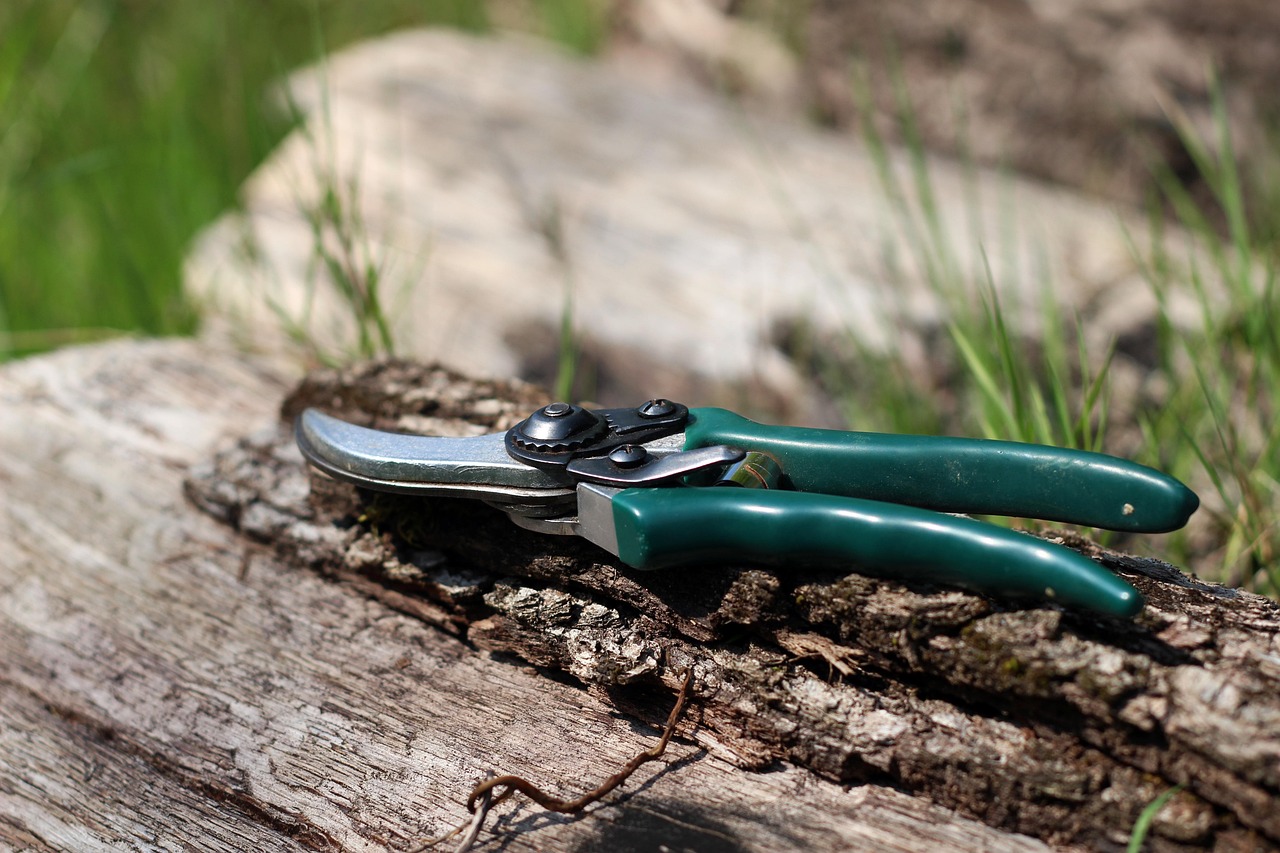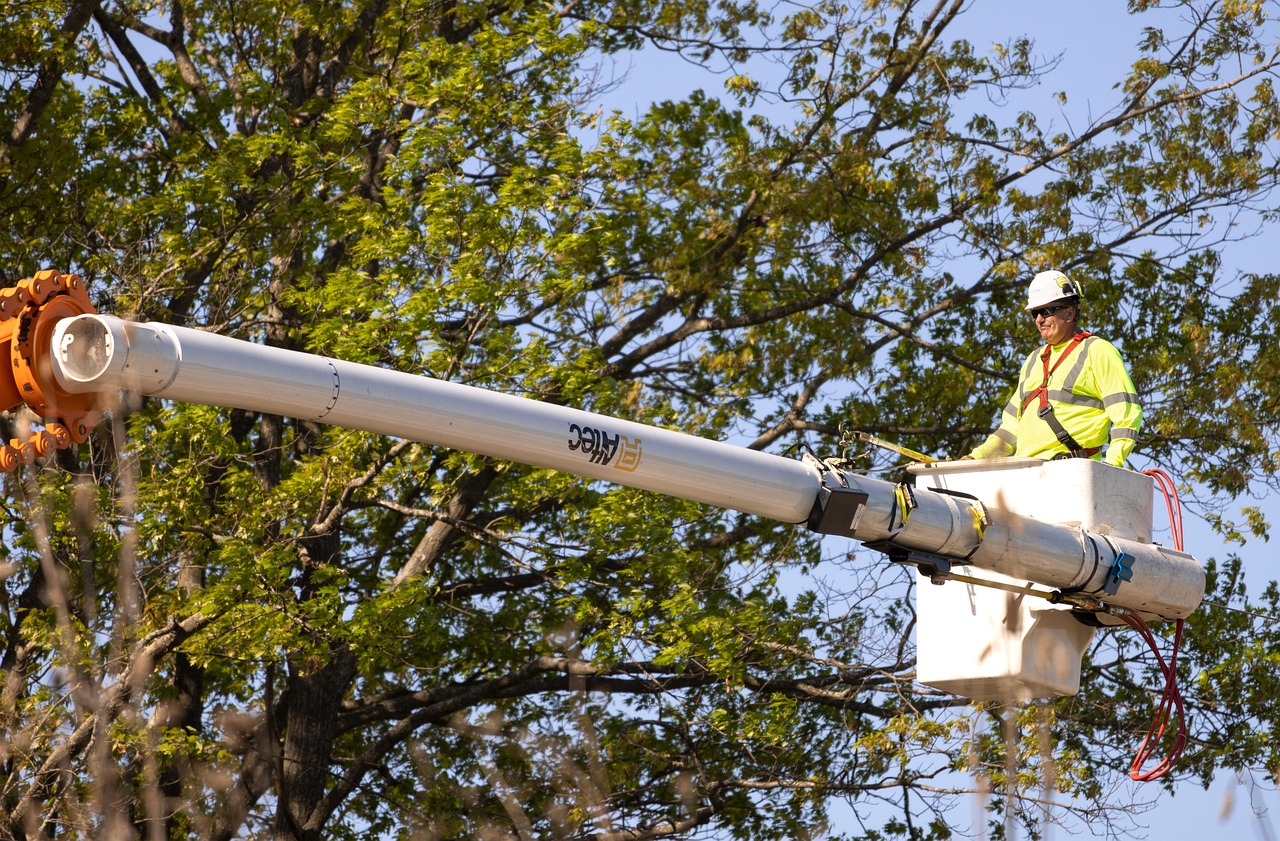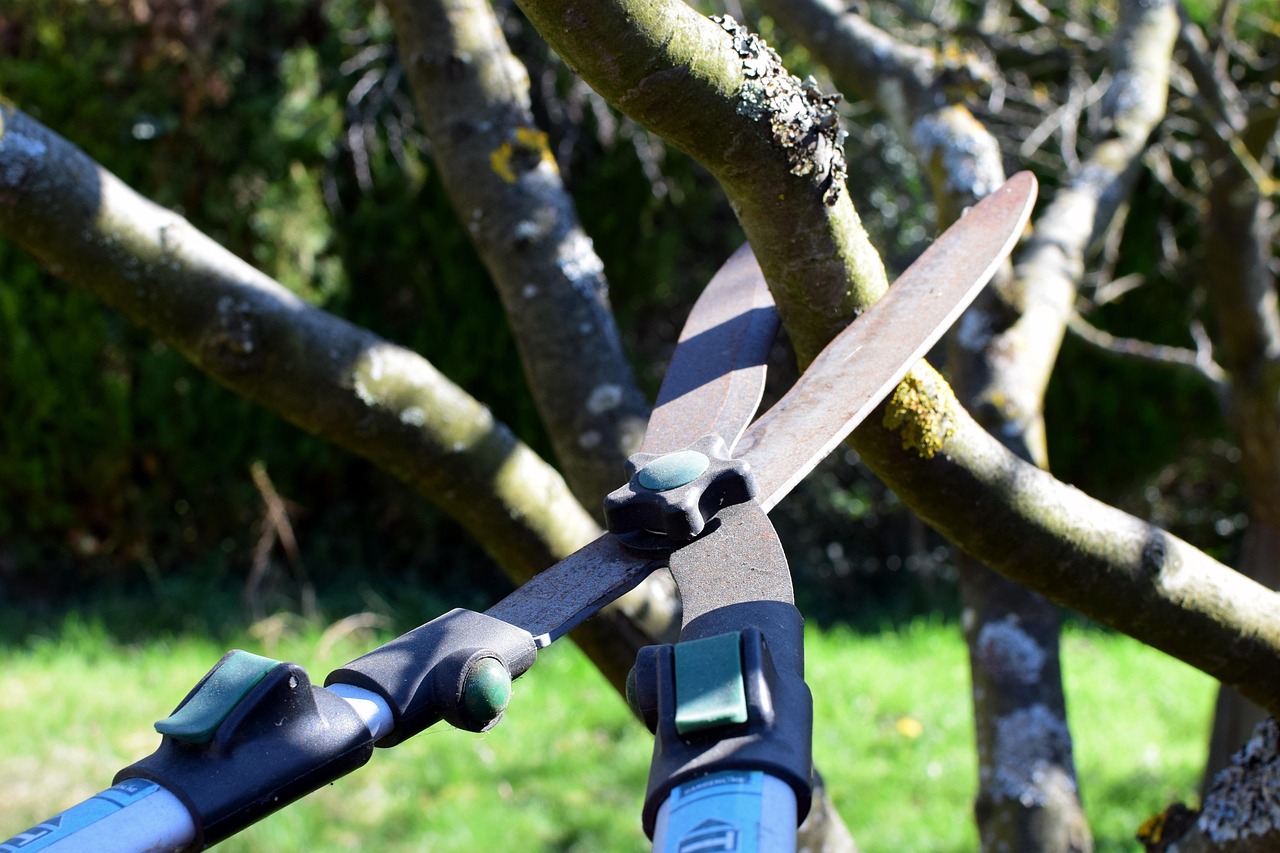Advanced techniques for pruning rare and exotic trees include selective thinning, crown reduction, and the use of specialized tools. These methods enhance tree health, promote growth, and maintain the unique characteristics of these valuable specimens.
Pruning is a critical practice in maintaining the health and aesthetics of trees. For rare and exotic species, it becomes even more vital due to their unique growth habits and environmental needs. Proper pruning techniques can ensure that these trees thrive in their specific settings while also preserving their natural beauty and structural integrity.

Rare and exotic trees often require specialized care compared to more common species. Understanding their growth patterns, seasonal behaviors, and specific needs can significantly impact the effectiveness of pruning. These trees may be more susceptible to diseases and pests, making careful pruning essential for their long-term survival.
Understanding the Importance of Pruning
Pruning serves several essential functions for trees, particularly those that are rare or exotic. Here are some of the primary reasons why pruning is crucial:
- Health Maintenance: Removing dead or diseased branches helps prevent the spread of pathogens.
- Structural Support: Pruning can improve the tree’s structure, making it less prone to damage from storms or pests.
- Aesthetic Appeal: A well-pruned tree enhances the landscape’s beauty and can increase property value.
- Encouraging Growth: Targeted pruning stimulates new growth, resulting in a healthier tree.
Each of these factors plays a role in ensuring the longevity and vitality of rare and exotic trees. By understanding the specific needs of each species, arborists can tailor their pruning strategies effectively.

Advanced Pruning Techniques
When it comes to advanced pruning techniques for rare and exotic trees, several methods stand out. These techniques are designed to maximize health and aesthetic qualities while minimizing stress on the tree.
Selective Thinning
Selective thinning involves removing specific branches throughout the tree to improve sunlight penetration and air circulation. This method is particularly effective for dense canopies that may harbor pests or diseases. The goal is to create a balanced structure without compromising the tree’s overall shape.
Crown Reduction
Crown reduction is another technique used to decrease the height or spread of a tree’s crown while maintaining its natural shape. This method is useful for trees that may interfere with structures or power lines. It requires careful planning to ensure that the tree remains healthy and does not suffer from excessive stress.

Use of Specialized Tools
Utilizing specialized tools can greatly enhance the effectiveness of pruning efforts. Tools such as pole saws, hand pruners, and loppers are essential for reaching high branches or making precise cuts. Additionally, using pruning shears that are designed for specific tasks can reduce the risk of injury to both the tree and the person performing the work.
| Tool Type | Description | Best Use |
|---|---|---|
| Hand Pruners | Small, handheld tools for precise cuts. | Ideal for small branches and detailed work. |
| Loppers | Larger scissors for thicker branches. | Perfect for branches up to 2 inches in diameter. |
| Pole Saw | A saw attached to a long pole for reaching high branches. | Useful for removing high branches without climbing. |
In addition to using the right tools, it’s essential to employ proper techniques when making cuts. Angled cuts can encourage water runoff, reducing the risk of rot. Furthermore, ensuring that cuts are clean helps minimize damage and promotes quicker healing.
Timing Your Pruning
The timing of pruning is crucial for achieving optimal results. Different trees have varying dormancy periods, and knowing when to prune can significantly influence their recovery and growth rates. Generally, late winter or early spring is considered an ideal time for most species.

However, some rare and exotic trees may have unique requirements based on their native environments. Researching each species’ specific needs will provide guidance on the best timing for pruning.
By employing these advanced techniques, arborists can ensure that rare and exotic trees not only survive but thrive in their environments. This attention to detail helps preserve the unique characteristics that make these trees valuable both ecologically and aesthetically.
Tools and Equipment for Pruning
Using the right tools and equipment is essential for effective pruning of rare and exotic trees. Each tool has its unique purpose, and selecting the appropriate one ensures that the job is done correctly while minimizing damage to the tree.
Essential Pruning Tools
Here are some essential tools that every arborist should have in their arsenal when working with rare and exotic trees:
- Hand Pruners: Ideal for small branches and precise cuts, these are significant for fine detailing.
- Loppers: These provide greater leverage for thicker branches, typically up to 2 inches in diameter.
- Saws: A folding saw or a hand saw is necessary for larger branches that cannot be cut with pruners or loppers.
- Pole Pruners: A pole saw attachment allows for reaching high branches without the need for a ladder.
- Pruning Shears: These specialized shears help reduce stress on the tree and make cleaner cuts.
- Safety Gear: Gloves, goggles, and helmets should always be worn to ensure safety during the pruning process.
Each tool serves a specific purpose and can enhance the overall effectiveness of the pruning process. Proper maintenance of these tools is also crucial to ensure they remain in good working condition.
Maintenance of Pruning Tools
Maintaining pruning tools is essential for their effectiveness and longevity. Here are some tips for proper maintenance:
- Cleaning: After each use, clean your tools with soap and water to remove dirt and sap. This prevents the spread of diseases between trees.
- Sharpening: Regularly sharpen blades to ensure clean cuts. Dull tools can cause more damage to trees.
- Oiling: Apply a light coat of oil to metal parts to prevent rusting and ensure smooth operation.
- Inspection: Regularly inspect tools for any signs of wear or damage. Replace any broken or worn parts as needed.
Understanding Tree Anatomy
A comprehensive understanding of tree anatomy is vital for effective pruning. Recognizing how trees grow and develop will guide arborists in making informed decisions during the pruning process.
The Structure of a Tree
Trees consist of several key components, each playing a crucial role in their overall health:
- Roots: The foundation of the tree, responsible for nutrient and water absorption.
- Trunk: Provides structural support and transports nutrients between roots and leaves.
- Branches: Extend from the trunk, supporting leaves and flowers while contributing to the tree’s overall shape.
- Leaves: The primary site for photosynthesis, converting sunlight into energy for growth.
- Bark: Protects the inner layers of the tree from pests and environmental factors.
Understanding these components aids in recognizing where to prune and how cuts may affect overall tree health.
Cambium Layer and Healing
The cambium layer is a critical part of tree anatomy that lies just beneath the bark. It is responsible for producing new cells that contribute to the growth of the trunk and branches. When pruning, it is essential to make cuts that do not damage this layer, as healthy cambium ensures proper healing. Poor cuts can lead to rot or disease entering the tree.
Pruning Techniques Based on Tree Types
Different types of trees respond differently to pruning techniques. Understanding these variations can significantly impact the health and appearance of rare and exotic trees. Here are some common tree types and recommended pruning practices:
| Tree Type | Recommended Technique | Notes |
|---|---|---|
| Deciduous Trees | Crown Thinning | This encourages light penetration and air circulation. |
| Evergreen Trees | Crown Reduction | This helps maintain shape without removing too much foliage. |
| Flowering Trees | Sculptural Pruning | This enhances blooms by removing excess growth. |
| Tropical Trees | Selectively Pruning | This encourages healthy growth patterns specific to their environments. |
By tailoring pruning techniques to specific tree types, arborists can ensure that each tree receives the care it needs to flourish. Additionally, being mindful of the tree’s natural growth pattern leads to better results in both health and appearance.
The Role of Climate in Pruning
The climate in which a tree grows significantly influences its growth patterns and responses to pruning. Understanding local climate conditions can help guide effective pruning strategies for rare and exotic trees.
Seasonal Considerations
The four seasons affect tree health and growth rates. Here are some seasonal considerations for pruning:
- Spring: As trees begin to leaf out, avoid heavy pruning. Focus on removing dead or damaged branches only.
- Summer: Light pruning can be effective, particularly for shaping. This allows trees to recover before fall.
- Fall: This is typically not recommended for most species due to stress from impending winter.
- Winter: Late winter is often ideal for major pruning since trees are dormant, minimizing stress.
Certain climates may also require adjustments in timing or technique based on local weather patterns, ensuring that rare and exotic trees receive optimal care throughout their life cycle.
Common Mistakes in Pruning
While pruning can greatly benefit rare and exotic trees, there are common mistakes that can hinder their growth and health. Understanding these pitfalls is essential for effective tree care.
Over-Pruning
One of the most significant mistakes is over-pruning. This occurs when too much foliage is removed, which can stress the tree and disrupt its natural growth patterns. Trees need a certain amount of foliage to photosynthesize effectively. Removing too many branches can lead to:
- Reduced Energy Production: Fewer leaves mean less energy production through photosynthesis.
- Increased Vulnerability: A heavily pruned tree may become more susceptible to pests and diseases.
- Poor Growth: Over-pruned trees may exhibit stunted growth or fail to thrive.
Improper Cutting Techniques
Using incorrect cutting techniques can also harm trees. Some common errors include:
- Flush Cuts: Cutting branches flush with the trunk removes the cambium layer, hindering healing.
- Leaving Stubs: Leaving long stubs can lead to decay and pest infestations.
- Incorrect Angle: Making cuts at the wrong angle can affect how water drains off the cut area, increasing the risk of rot.
To avoid these issues, it is crucial to understand proper cutting techniques and apply them consistently during pruning.
Pruning for Specific Tree Health Issues
Rare and exotic trees may be susceptible to various health issues that require targeted pruning strategies. Understanding these problems can help in determining the best approach for each tree.
Pest Infestation
Pests can be particularly damaging to rare and exotic trees. Signs of infestation may include wilting leaves, discolored foliage, or visible insects on branches. Effective pruning strategies include:
- Removing Infested Branches: Cut away any branches showing signs of infestation to prevent the spread of pests.
- Cleaning Up Debris: Regularly remove fallen leaves and branches to eliminate potential breeding grounds for pests.
- Monitoring Tree Health: Regularly check for signs of pest activity and address issues promptly.
Disease Management
Disease can seriously impact the health of rare and exotic trees. Common diseases may include fungal infections or bacterial blight. Pruning techniques for managing disease include:
- Sanitation Pruning: Remove dead or diseased branches as soon as they are identified to prevent disease spread.
- Avoiding Wet Conditions: Prune during dry weather to minimize the risk of introducing pathogens through wet cuts.
- Encouraging Air Circulation: Thinning out dense areas helps improve air circulation, reducing humidity levels that foster disease growth.
Restoration Pruning Techniques
Restoration pruning is a specialized technique used to restore the health and appearance of neglected or damaged trees. This is particularly important for rare and exotic species that may have unique restoration needs.
Steps in Restoration Pruning
The restoration pruning process typically involves several steps:
- Assessment: Evaluate the overall health of the tree and identify areas that require attention.
- Removal of Dead or Damaged Wood: Start by removing any dead, broken, or diseased branches to improve overall tree vitality.
- Crown Reduction: If necessary, reduce the height or spread of the crown to encourage new growth and enhance structural integrity.
- Thinning: Thin out crowded areas to allow light penetration and air circulation, promoting healthier growth.
This systematic approach allows arborists to address multiple issues while minimizing stress on the tree during the restoration process.
The Role of Professional Arborists
The care of rare and exotic trees often necessitates the expertise of professional arborists. Their training equips them with the knowledge needed for effective pruning practices tailored to specific tree species.
Benefits of Hiring Professionals
There are several benefits to hiring a professional arborist for pruning tasks:
- Expertise: Arborists possess specialized knowledge about various tree species, including their specific pruning needs.
- Safety: Professionals are trained in safety practices, reducing the risk of injury during pruning.
- Proper Techniques: Arborists utilize proven techniques that ensure healthy cuts and promote tree recovery.
- Long-Term Care: Professionals can provide ongoing maintenance plans to support the long-term health of rare and exotic trees.
By leveraging the expertise of professional arborists, tree owners can ensure that their rare and exotic trees receive the highest level of care throughout their lifecycle.
Conclusion
The art and science of pruning rare and exotic trees involve a deep understanding of tree biology, appropriate techniques, timing, and the right tools. By avoiding common mistakes and implementing effective pruning strategies, one can significantly enhance the health and beauty of these unique specimens.
Advanced Training and Continuing Education
As the field of arboriculture continues to evolve, ongoing education and training for those involved in pruning rare and exotic trees become increasingly vital. New research, tools, and techniques are constantly being developed, making it essential for professionals to stay updated on the latest practices.
Workshops and Certification Programs
Participating in workshops and certification programs can provide valuable insights into advanced pruning techniques. These programs often cover topics such as:
- Tree Biology: Understanding the physiological responses of trees during pruning.
- Advanced Tools: Learning to use new equipment effectively and safely.
- Pest and Disease Management: Identifying and managing threats that specifically affect rare and exotic trees.
- Regulatory Guidelines: Staying informed about local regulations concerning tree care and preservation.
Investing in education not only enhances individual skills but also improves the overall health of urban forests by ensuring that those who care for them are knowledgeable and effective.
Networking with Other Professionals
Networking with other arborists and tree care professionals can provide opportunities for knowledge sharing and collaboration. Attending conferences, joining professional organizations, and participating in online forums can help broaden one’s understanding of specific challenges faced in the field.
Utilizing Technology in Pruning
Technology has made significant strides in the field of arboriculture. Utilizing modern technology can enhance the effectiveness of pruning practices for rare and exotic trees.
Drone Technology
Drones can be invaluable tools for assessing tree health from above. They provide aerial imagery that helps arborists identify issues such as:
- Crown Density: Determining if a tree is too dense and may require thinning.
- Infestations: Spotting signs of pest infestation that may not be visible from the ground.
- Overall Health: Monitoring foliage color and density to assess general tree vitality.
Mobile Applications
There are various mobile applications available that assist arborists in planning and tracking pruning activities. These applications can help with:
- Tree Inventory: Keeping a record of species, health status, and pruning history.
- Scheduling: Streamlining the scheduling of pruning activities based on seasonal needs.
- Guidance: Providing information on best practices tailored to specific tree species.
By integrating technology into their practices, arborists can work more efficiently and make informed decisions about tree care.
Environmental Considerations
The impact of environmental factors on rare and exotic trees cannot be overlooked. Understanding these factors can help arborists make better decisions concerning pruning practices.
Sustainable Practices
Sustainability in tree care is becoming increasingly important. Arborists should consider the following sustainable practices when pruning rare and exotic trees:
- Minimizing Waste: Using pruned material for mulch or compost instead of sending it to landfills.
- Biodiversity Conservation: Protecting surrounding flora and fauna when conducting pruning activities.
- Soil Health: Avoiding soil compaction around tree roots to maintain soil health and structure.
The Urban Environment
In urban settings, where rare and exotic trees often grow, additional considerations must be taken into account. Factors such as pollution, limited space, and soil quality can significantly impact tree health. Arborists should:
- Assess Soil Quality: Conduct soil tests to determine the nutrient levels and pH, which can inform fertilization and watering practices.
- Manage Compaction: Avoid working around tree roots to prevent soil compaction that restricts growth.
- Evaluate Surroundings: Consider the surrounding infrastructure when planning pruning to minimize damage to nearby structures.
Final Thoughts
The meticulous care of rare and exotic trees through advanced pruning techniques is a blend of science, art, and ongoing education. By understanding tree biology, utilizing advanced tools, and adhering to sustainable practices, arborists can significantly contribute to the health and longevity of these unique specimens. Continuous learning, technological integration, and environmental awareness are essential components for success in this field.
The beauty and ecological value of rare and exotic trees are worth preserving. Through careful pruning practices, we not only enhance their growth but also enrich our landscapes for future generations. Engaging with professionals, utilizing modern technology, and committing to sustainable methods will ensure that these remarkable trees continue to thrive in our environments.
